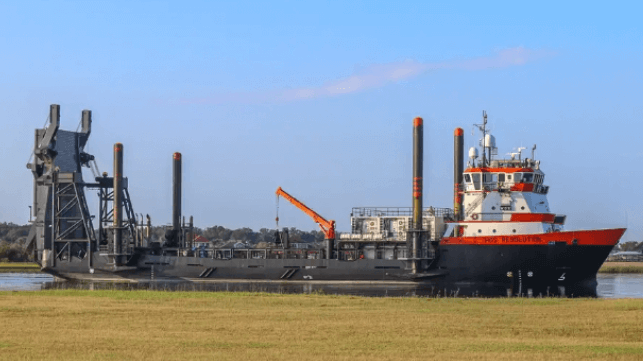Budget Watchdog Forecasts Big Cost Overrun for Marine Corps' Landing Ships

The cost of procuring a fleet of small amphibious ships to support the Marine Corps is expected to be three times higher than the U.S Navy expects, the Congressional Budget Office (CBO) has said.
In a new review of the Navy’s Medium Landing Ship (LSM) program, CBO also reckons that apart from costing more, the class of 18 to 35 new ships is also facing uncertainties in terms of design, capabilities, size, and survivability features.
The LSM program is critical to the Marine Corps' new operational concept, dubbed Expeditionary Advanced Base Operations (EABO), which calls for dispersing small units around an island archipelago. The Navy's FY2024 budget submission calls for buying the first ship at a cost of $188 million in 2025. The cost for the subsequent ships would fall to about $150 million.
CBO has dismissed the Navy’s estimates, and believes that the program will cost significantly more. In its report, CBO projects that it will cost the Navy between $6.2 billion and $7.8 billion in 2024 (inflation-adjusted) to procure 18 ships under the program. This translates to between $340-430 million per ship.
If the Navy changed the LSM’s design to make it equivalent to an amphibious warfare ship, then each vessel could cost between $475 million and $600 million, adding between $2 billion and $3 billion to the costs of an 18-ship program and between $5 billion and $6 billion to the costs of a 35-ship program.
The Navy could save on costs if the LSMs were designed to more commercial standards, as sought by the Marine Corps. This would mean between $110 million to $140 million per ship, dramatically reducing cost.
Uncertainties also linger on design characteristics to potential shipbuilders.
Part of the uncertainty emanates from the fact that the Navy is struggling to make a final decision on the preferred design from concepts presented by five companies. Besides, the Navy is yet to make a decision on whether a single shipyard should build all the ships or have them built in multiple yards.
In terms of size, the ships are expected to be 400 feet long, have a beam of 55 feet, displace 2,522 long tons and have a 12-foot draft. They are also expected to have a transit speed of 14 knots with a range of 3,500 nautical miles, have a capacity of 70 sailors and a service life of 20 years.
Marine Corps leadership is pushing for 35 ships, nine for each Marine Littoral Regiment, plus a handful of extras expected to be in maintenance availabilities at any given time.
The ships are intended to transport, deploy, and, if necessary, resupply and redeploy Marine littoral regiments in and around a theater of operations, particularly in the western Pacific and in any potential conflict with China. CBO said that the Navy could do more to clarify how LSM will be used - and particularly, how or whether it would be used in an active conflict zone.
“A ship that is not expected to face enemy fire in a conflict could be built to a lesser survivability standard, with fewer defensive systems than a ship that would sail in contested waters during a conflict,” observed the CBO.
